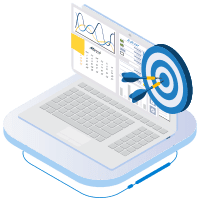
Demand Forecasting and Demand Planning – What Is the Difference?
When quantifying and allocating products, retailers frequently reference “demand forecasting” and “demand planning” synonymously; while they share many similarities, they are essentially two distinct concepts that play different roles in the supply chain management process. Understanding the distinction and the complex link between the two is essential and can give retailers the perspective they need to produce reliable forecasts and improve profitability.
What is demand forecasting?
Demand forecasting is the science of generating a projection of consumer demand. A forecast relies heavily on historical data to identify past trends and cycles in purchase behavior, including future information for what the business is doing to influence demand. With the right scientific approach, retailers can build solid forecasts that can help them prepare for uncertainty, price optimally and successfully allocate resources.
For a forecast to be reliable, the following questions should be asked:
1. What decisions are being driven by the forecasts?
– What needs to be forecasted?
– How far out should the forecast be generated?
2. What historical data is available?
– Do we have historical promotional information?
– How much historical data do we have?
– Is the data reliable?
3. Is there other external information that needs to be applied?
4. How will we measure the forecast success?
5. What is our process for improving the forecast over time?
What is demand planning?
The demand planning process ensures that a business can provide customers with a specific product or service when, where, and how they want it, while keeping costs as low as possible. Therefore, demand planning encompasses demand forecasting and executing a supply chain operation to ensure all team members are prepared. Demand planners are needed to help understand changing demand patterns driven by new products, competition, internal and external factors, and changing market conditions.


